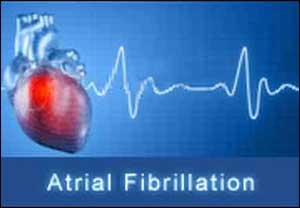- Home
- Editorial
- News
- Practice Guidelines
- Anesthesiology Guidelines
- Cancer Guidelines
- Cardiac Sciences Guidelines
- Critical Care Guidelines
- Dentistry Guidelines
- Dermatology Guidelines
- Diabetes and Endo Guidelines
- Diagnostics Guidelines
- ENT Guidelines
- Featured Practice Guidelines
- Gastroenterology Guidelines
- Geriatrics Guidelines
- Medicine Guidelines
- Nephrology Guidelines
- Neurosciences Guidelines
- Obs and Gynae Guidelines
- Ophthalmology Guidelines
- Orthopaedics Guidelines
- Paediatrics Guidelines
- Psychiatry Guidelines
- Pulmonology Guidelines
- Radiology Guidelines
- Surgery Guidelines
- Urology Guidelines
American Indians at higher risk of Atrial fibrillation compared to other racial groups, finds Circulation study

Atrial fibrillation (AFib) occurred more often among American Indians than among other racial and ethnic groups, according to new research. Further, the higher frequency of atrial fibrillation in American Indians persisted after controlling for other factors such as age, sex, income and cardiovascular and other diseases. The study has been published in Circulation, the American Heart Association’s premier cardiovascular research journal.
Atrial fibrillation affects approximately 2.7 million people in the United States, and it is a serious disorder that can increase the risk for stroke and other cardiovascular diseases. The most common symptom is a fluttering heartbeat; however, some people may not have any symptoms at all.
Researchers in this study reviewed 300,000 new cases of Atrial fibrillation between January 1, 2005, and December 31, 2011, in California, and found that among American Indians, new AFib cases occurred, on average, 7.5 times per year per every thousand patients. Among other racial and ethnic groups, new AFib cases occurred on average 6.9 times per year per every thousand patients. The higher frequency of AFib in American Indians persisted after controlling for other factors, such as age, sex, income and heart and other diseases.
To collect the data for this study, the researchers examined the records of 16 million California residents aged 18 years or older in the Healthcare Cost and Utilization Project. Data collected included statewide information on hospital care, to identify new cases of AFib and to link them to patients’ self-reported race and ethnicity. The average follow-up time was slightly more than four years. The 300,000 patients included in the analysis were new cases of AFib treated in an emergency department, inpatient hospital or ambulatory surgery clinic. Nearly 400,000 patients were excluded due to pre-existing AFib.
“We were surprised to find that American Indians experienced a higher risk of atrial fibrillation compared to every other racial and ethnic group,” said principal investigator Gregory M. Marcus, M.D., M.A.S., endowed professor of atrial fibrillation research at University of California, San Francisco. “Understanding the mechanisms and factors by which American Indians experience this higher risk may help investigators better understand the fundamental causes of atrial fibrillation that prove useful to everyone at risk for AFib, regardless of their race or ethnicity.”
Damage to the heart from other heart diseases, such as uncontrolled high blood pressure, can increase the risk for AFib, but sometimes the root cause is unknown. Previous research found a higher risk among whites, even though American Indians and other minority populations may have more risk factors. Until now, however, Atrial fibrillation research in the general population did not include American Indians.
Several limitations could have affected this study’s results. The analysis was retrospective and observational, therefore, it could not pinpoint why American Indians had a higher AFib risk. Another limitation is that some Atrial fibrillation cases may have been missed due to differences in the medical records codes used to report diagnoses. Self-reported race and ethnicity can sometimes be inaccurate, and, the source data did not include people who self-identified as multiracial.

Disclaimer: This site is primarily intended for healthcare professionals. Any content/information on this website does not replace the advice of medical and/or health professionals and should not be construed as medical/diagnostic advice/endorsement or prescription. Use of this site is subject to our terms of use, privacy policy, advertisement policy. © 2020 Minerva Medical Treatment Pvt Ltd